Text
WEEK 10: DIGITAL CITIZENSHIP AND CONFLICT: SOCIAL MEDIA GOVERNANCE
This piece of writing will discuss online harassment, with a focus on how to best solve and deal with the issue.
WHAT IS ONLINE HARASSMENT?
Jones et al. (2013, p. 54, as cited in Haslop et al., 2021, p. 1420) define online harassment as the behaviors that are unwanted and offensive targeting directly at other people through modern technology channels, for instance, the internet. Online harassment can exist in various forms, for example: directly sending abuse messages, sexual images, spreading rumors, and so forth (Haslop et al., 2021, p. 1420).
THE REALTITY
According to Pew Research Centre & Southern and Harmer (2017; 2019, as cited in Haslop et al., 2021, p. 1420), online harassment is more likely to happen to women than men. A YouGov survey, including 2121 women and 1738 male participants, reports that sexual images have been sent to 40% of women participating in the survey without their requests, while only 26% of male participants have been sent those images (Smith 2018, as cited in Haslop et al., 2021, p. 1420). This phenomenon can be explained through the “nature” of online space, which is now considered a “public space”, where if women want to ensure their safety, they must exclude their presence from the space (Vitis & Gilmour, 2016, p. 339). Furthermore, Keraian & Megarry (2014; 2014, as cited in Vitis & Gilmour, 2016, p. 339) add that once women choose to participate in the digital space, they must take harassment and attack as an apparent and normal experience.
THE CONSEQUENCES
Being harassed online, numerous women chose to censor themselves to minimize the risk of further online harassment in the future (Lenhart et al., 2016, as cited in Haslop et al., 2021, p. 1421). Others change their names in the online world, reduce their time appearing online, become more selective in choosing what online site to use, or even shut down every online account (Gumbus & Meglich, 2013, p. 48; Franks, 2012, as cited in Vitis & Gilmour, 2016, p. 339). The “nature” of the online space causes these negative consequences, leading to demotivation and a decrease in women's engagement with online sites (Haslop et al., 2021, p. 1421).
HOW SOCIAL MEDIA PLATFORMS, AS ONLINE PLATFORMS, HELP FIGHT AGAINST ONLINE HARASSMENT?
Meta’s social media platforms, including Facebook, Instagram, and Messenger, and TikTok are now putting a lot of effort into controlling and preventing online harassment. Meta has used many strategies to control and prevent this issue, such as users reporting inappropriate content (e.g.: sexual images or offensive content) to Meta (Figure 1), Meta limiting and restricting connections between some specific user groups (Figure 2), etc. More information can be found on Meta: Prevent bullying and harassment). As for TikTok, the platform allows its users to control who can message them and who they can send messages to by having different options for setting their direct message (Figure 3); offensive comments can be filtered, and users can control who can comment under their videos (Figure 4); other strategies are shown in TikTok: Bullying prevention. The strategies that are used by these social media platforms help remove content that is harmful to users and allow users to actively protect themselves.

Figure 1: Meta's strategies in controlling and preventing online harassment
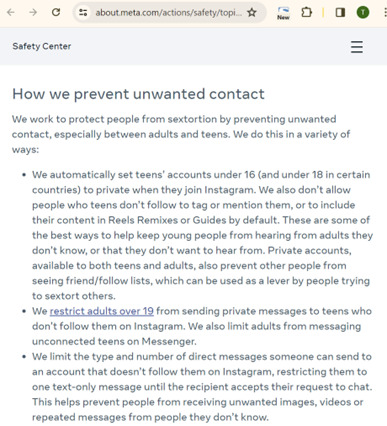
Figure 2: Meta's strategies in controlling and preventing online harassment

Figure 3: TikTok's strategy in controlling and preventing online harassment
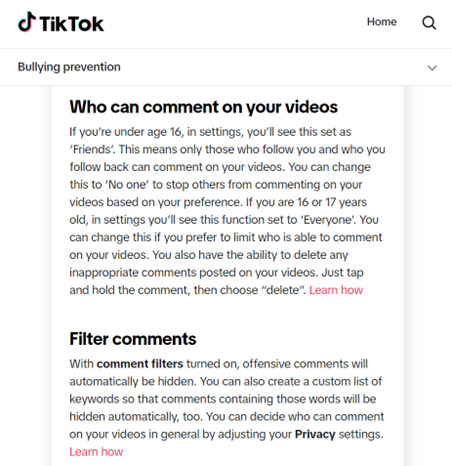
Figure 4: TikTok's strategies in controlling and preventing online harassment
ONLINE HARASSMENT MUST BE SOLVED FROM THE ROOT
Although social media platforms have used many strategies to prevent and control online harassment as mentioned above, those strategies are unbale to fully solve the issue. Schoenebeck et al. (2023, p. 4) claim that people’s behavior will not be changed after their social media accounts are banned or their inappropriate content is removed; additionally, removing content or banning users do not motivate people to not harass others in the online world.
THE SOLUTIONS FOR DEALING AND SOLVING ONLINE HARASSMENT
To truly and fully deal with online harassment, it is suggested that education, especially digital citizenship education, must be involved. The reason is that digital citizenship education teaches people to behave legally, ethically, and safely when they are appearing in the online world (Heath, 2018, p. 343). In addition, digital citizenship education also makes people become one of the three types of citizens, including “personally responsible citizens”, “participatory citizens”, and “justice-oriented citizens” (Heath, 2018, p. 345) or makes people become a citizen that has all those three characteristics. Digital citizenship education educates people on how they should behave online and in the long run, it can change their behaviors.
EXAMPLE
Thanks to digital citizenship education, some people become “participatory citizens," which refers to citizens who engage and participate in the community in order to solve social problems (Heath, 2018, p. 345). Anna Gensler (IG account: Instagranniepants) is a highlight example. As she has been harassed online and talked disrespectfully on online dating sites, as an artist and as a digital citizen, she has decided to fight against online harassment through her drawings (Figure 5). As stated in the article, “The intention of Gensler’s art is thus to ‘objectify back’, educate, name inappropriate behavior, punish perpetrators and assert herself.” (Vitis & Gilmour, 2016).

Figure 5: Anna Gensler as a participatory citizen
CONCLUSION
In conclusion, online harassment causes digitized inequality for women as it demotivates them from participating in the digital world. Although various social media platforms, such as Facebook, Instagram, and TikTok, are now putting efforts into controlling and preventing online harassment, they are still solving the surface of the issue. In order to fully solve online harassment, digital citizenship education is the most prioritized strategy.
REFERNCES
Haslop, C., O’Rourke, F., & Southern, R. (2021). #NoSnowflakes: The toleration of harassment and an emergent gender-related digital divide, in a UK student online culture. Convergence: The International Journal of Research into New Media Technologies, 27(5), 1418–1438. https://doi.org/10.1177/1354856521989270
Heath, M. K. (2018). What kind of (digital) citizen? The International Journal of Information and Learning Technology, 35(5), 342–356. https://doi.org/10.1108/ijilt-06-2018-0067
Schoenebeck, S., Lampe, C., & Triệu, P. (2023). Online Harassment: Assessing Harms and Remedies. Social Media + Society, 9(1), 1–12. https://doi.org/10.1177/20563051231157297
Vitis, L., & Gilmour, F. (2016). Dick pics on blast: A woman’s resistance to online sexual harassment using humour, art and Instagram. Crime, Media, Culture: An International Journal, 13(3), 335–355. https://doi.org/10.1177/1741659016652445
#swinburne#mda20009#week10#online harassment#participatory citizen#digital citizenship#digitized inequalities#women#social media#humour#digital space
0 notes
Video
youtube
I have just watched this amazing video: “This Is How Streamers Make Money Live Streaming”.
0 notes
Text
WEEK 9: GAMING COMMUNITIES, SOCIAL GAMING AND LIVE STREAMING
The two points that stand out the most in this week’s reading set are the style of play “sandbox” game and game livestreaming. Thus, the discussion this week will focus on these two points. "The Sims 4" will be used as an example for "Sandbox" game, while "Twitch" will be used as an instance for game livestreaming.
SANDBOX GAMES
Definition
According to Hjorth et al. (2020, p. 35), sandbox is defined as a style of play that only has a few limitations for a game character; besides, players are able to have the authority to change the virtual world’s aspects.
Characteristics
“Sandbox” games are different from other game styles like “Open world”, which is a style of game that allows players to have freedom in exploring the environment, or “progression-style game”, which is a game style that requires task completion (Hjorth et al., 2020, pp. 35–36). It is because of these characteristics:
The first difference is players’ autonomy and ability. Hjorth et al. (2020, p. 36) claim that the environment in the “sandbox” games can be created, modified, and destroyed by the players (Hjorth et al., 2020, p. 36). Price (2014, p. 135) illustrates that the game content of The Sims, including the characters’ appearance, surrounding environment (such as: house, town, etc), and so forth, can be customized by players. For example, The Sims 4 allows players to design their Sims town by purchasing or “destroying” (selling) furniture or choosing the types of houses to build in their town (Figure 1). Having this ability, “sandbox” games’ players can explore their creativity (Hjorth et al., 2020, p. 35).
The second difference is the requirements for task completion. While completing tasks is a part of a play in “open world” or “progression-style” games, tasks do not need to be completed by players in “sandbox” games because tasks are not part of a play (Hjorth et al., 2020, p. 35). The Sims 4’s players do not need to complete the assigned tasks because the game does not have a goal (Price, 2014, p. 135).
GAME LIVESTREAMING
According to Tammy Lin et al. (2019, p. 11), game livestreaming can be understood as playing or performing a gameplay publicly to audiences spectating the live content; furthermore, there are interactions between game streamers and audiences as well as the existence of synchrony between audiences and game streamers. This second part of the discussion will focus on discussing those aspects of game livestreaming in more detail.
Playing and performing a gameplay publicly
Taylor (2018, p. 3) claims that gamers use streaming media, such as: Twitch, YouTube gaming, or Facebook gaming, to broadcast their gameplay. The statistics show that gamers can reach a number of viewers of up to thousands per livestreaming session (Taylor, 2018, p. 3). For example, game streamers on Twitch, a livestreaming media platform mainly concentrating on broadcasting and viewing content about video games (Johnson & Woodcock, 2018, p. 2), have received thousands of views (Figure 1).
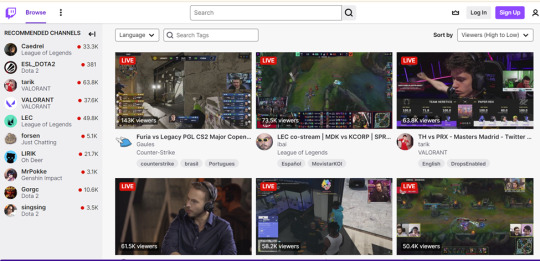
Figure 1: Gamers livestream on Twitch and receive thousands of views
The interactions between game streamers and audiences
Thanks to the platform affordances, game streamers and audiences can interact directly with each other through a “synchronous” chat window (Taylor, 2018, p. 6). For Twitch, audiences can interact with streamers by chatting and sending messages to the streamers through the "stream chat" and those chats and messages will appear on the streamers' monitors (Figure 2). Through the interactions during the game, game streamers can share tips on how to play the game, show their playing skills, illustrate their unique and personal style of playing the game, and so forth (Tammy Lin et al., 2019, p. 12).
Taylor (2018, p. 9) indicates that some gamers dedicate their time to livestreaming their gameplay to convert the time they spend playing games into a real and professional job, which can generate income through advertising, donations, sponsorships, and other monetization forms. As a result, donations are another way that audiences can interact with game streamers (Figure 2).
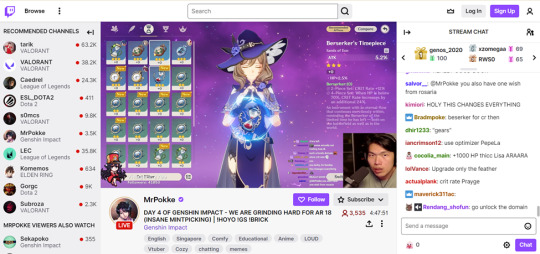
Figure 2: The interaction between game streamers and audiences through "stream chat" and "donations" (on the top right of the picture)
In conclusion, this week has provided an understanding of the new term "sandbox" game and deepened the knowledge about game livestreaming for the Tumblr's discussion owner.
REFERENCES
Hjorth, L., Richardson, I., Davies, H., & Balmford, W. (2020). Exploring Minecraft Ethnographies of Play and Creativity. Palgrave Macmillan.
Johnson, M. R., & Woodcock, J. (2018). The impacts of live streaming and Twitch.tv on the video game industry. Media, Culture & Society, 41(5), 670–688. https://doi.org/10.1177/0163443718818363
Price, L. (2014). The Sims: A Retrospective A Participatory Culture 14 Years On. Journal of Cult Media, 7, 135–140.
Tammy Lin, J.-H., Bowman, N., Lin, S.-F., & Chen, Y.-S. (2019). Setting the digital stage: Defining game streaming as an entertainment experience. Entertainment Computing, 31, 1–40. https://doi.org/10.1016/j.entcom.2019.100309
Taylor, T. L. (2018). Watch Me Play: Twitch and the Rise of Game Live Streaming. Princeton University Press.
#week 9#swinburne#mda20009#twitch#sandbox#sandbox game#the sims#livestreaming#game livestreaming#donations#chat window#interaction#viewers#broadcasting#autonomy#task completion#open world
0 notes
Text
Selfie Dysmorphia: How social media filters are distorting beauty 🤳🏽
I learned a lot from this video!
youtube
1 note
·
View note
Text
Let's spread the positive body image to our loved ones!

Love your body because you only have one 🖤
14 notes
·
View notes
Text

@/consciousstyle on Instagram
from the 'create & transform {handicrafting hobbies}' Pinterest board
1K notes
·
View notes
Text
WEEK 8: AUGMENTED REALITY FILTERS
As this week’s topic is "augmented reality filters," this post will focus on discussing the reasons why people use AR filters. Although people use filters because of filters' benefits, they also need to keep in mind that filters also have their disadvantages, and these disadvantages are also discussed in the post. However, it is necessary to understand the definition of AR beauty filters before analyzing the pros and cons of them. Regarding Isakowitsch (2023), AR beauty filters can be understood as automated tools for editing photos using AI and computer vision in order to detect the features of a face and modify them. Hence, in general, people use AR beauty filters to edit photos. Nevertheless, editing photos is not the only reason why people use AR beauty filters. People choose to use AR beauty filters because of these benefits:
BENEFITS
The first benefit of filters, according to Baker (2020, p. 208), is that filters can be used as alternatives for makeup. People can apply “appearance” and “makeup” filters to reinstate their makeup look as well as polish their appearance after a long day (Baker, 2020, p. 208) (Figure 1). The second advantage of filters is that they offer users more power and control over their own image and appearance when they can change their appearance themselves without relying on cosmetic surgery (Coy-Dibley, 2016, p. 6). For instance, filters can change people’s face shape, adjust their skin, raise their cheekbones, and so forth (Isakowitsch, 2023).

Figure 1: Filter reinstates people's polish appearance
DRAWBACKS
Despite offering many advantages, filters also have disadvantages, and these disadvantages negatively impact society. One of the greatest disadvantages of filters to society is that they create a “stereotypical form of beauty” (Baker, 2020, p. 209). Filters create a “stereotypical form of beauty” because most of the filters are created with a function, which is to “thin out the face, slim and shorten the nose, enlarge the eyes, plump the lips, and smooth the skin” (Baker, 2020, p. 209). Furthermore, this “stereotypical form of beauty” is created due to the limitations of the apps themselves, when the apps create filters that only illustrate some of certain types of aesthetics, which the aesthetics follow current trends (Coy-Dibley, 2016, p. 5). As a result, “stereotypical form of beauty” can lead to fears, dysmorphic disorders, and body dissatisfaction among people in society. The first reason is that social comparison is individuals’ desire because they want to know more about themselves (Crusius et al., 2022). More specifically, individuals have a desire to evaluate themselves objectively through comparing themselves with others; additionally, individuals compare themselves with media images as well (Grogan, 2008, p. 118, as cited in Coy-Dibley, 2016, p. 5). Thus, when there are many “negative” dissimilarities, either between individuals and others or between individuals and media/ideal images, they will be dissatisfied with their current body image (Coy-Dibley, 2016, p. 3). Moreover, the second reason is that conforming to the ideal beauty standard of social media causes pressure on individuals, and individuals also have more anxiety and uncomfortable feelings about their current body image (Verrastro et al., 2020, p. 31), which lead to dysmorphic disorder and lower the quality of life of people in society.

In conclusion, AR filters offer both advantages and disadvantages for users and the society. On the one hand, filters provide convenient and creative tools for makeup application, self-expression, and altering one's appearance. On the other hand, the constant exposure to unrealistic beauty standards promoted by these filters can potentially leading to social comparison and body dysmorphia.
REFERENCES
Barker, J. (2020). Making-up on mobile: The pretty filters and ugly implications of Snapchat. Fashion, Style & Popular Culture, 7(2), 207–221. https://doi.org/10.1386/fspc_00015_1
Coy-Dibley, I. (2016). “Digitized Dysmorphia” of the female body: the re/disfigurement of the image. Palgrave Communications, 2(1), 1–9. https://doi.org/10.1057/palcomms.2016.40
Crusius, J., Corcoran, K., & Mussweiler, T. (2022). Social Comparison: Theory, Research, and Applications. In D. Chadee (Ed.), Theories in Social Psychology. WIley. https://doi.org/10.1002/9781394266616.ch7
Isakowitsch, C. (2023). How Augmented Reality Beauty Filters Can Affect Self-perception. Irish Conference on Artificial Intelligence and Cognitive Science, 239–250. https://doi.org/10.1007/978-3-031-26438-2_19
Verrastro, V., Fontanesi, L., Liga, F., Cuzzocrea, F., & Gugliandolo, M. C. (2020). Fear the Instagram: beauty stereotypes, body image and Instagram use in a sample of male and female adolescents. Qwerty, 15(1), 31–49. https://doi.org/10.30557/qw000021
#filters#cosmetic surgery#social comparison#swinburne#mda20009#week 8#ar filters#beauty filters#makeup#beauty enhancements#ideal beauty#stereotypical form of beauty
0 notes
Text
WEEK 7: DIGITAL CITIZENSHIP AND HEALTH EDUCATION: BODY MODIFICATION ON VISUAL SOCIAL MEDIA
AESTHETIC TEMPLATE AND ITS NEGATIVE IMPACTS ON PEOPLE’S HEALTH
The visibility of social media posts is the factor that determines the revenue of social media influencers; however, the visibility of social media posts is affected by the algorithmic system of social media (Duffy & Meisner, 2022, p. 289). Carah & Dobson (2016, p. 1) claim that social media algorithms will make the posts visible if they receive many engagements from their audiences. Therefore, social media influencers tend to pursue the appearance norms that currently exist rather than promoting and respecting the body image that is realistic, because this can help them gain more attraction, leading to an increase in engagement and profit (Pan et al., 2022, p. 7). Thus, social media influencers can be considered aesthetic labors, who will receive compensation, either directly or indirectly, for their own body appearance and look and the effect of their body appearance (Drenten et al., 2019, p. 44). Since social media influencers are synonymous with aesthetic labors, which they are not pursuing and promoting realistic body image, it means that they are creating the aesthetic template or the ideal body image in society due to their social power and the exposure of these images on social media, the sites and applications that are famous by people nowadays (Pan et al., 2022, p. 1-2).
In China, the feminine aesthetic template is “a thinner body, a palm-sized face, delicate white skin, big eyes, and a high nose bridge” (Lang et al., 2023, p. 414). Therefore, it is easy to see various Douyin (TikTok in China) influencers in the country pursuing and promoting this “aesthetic template” (Figure 1). However, the emergence of this aesthetic template or this ideal body image on social media causes negative impacts on young people’s health. When they consume too much of this “ideal body image”, they may behave riskily to change their appearance to conform with the contemporary aesthetic template (Pan et al., 2022, p. 7). For example, Zhang et al. (2018, p. 2) report that young Chinese women believe a synonym of beauty is underweight. Thus, many of them might drink weight-loss products as they are advertised and promoted extensively in the country (Zhang et al., 2018, p. 2). Furthermore, consuming the aesthetic template or “ideal body image” can also cause BDD (Body Dysmorphic Disorder), a disorder of mental health in which people will have body and appearance considerations when they believe that they are defective in appearance (Yurtsever et al., 2023, p. 2). Importantly, BDD needs to be considered as the most negative consequence when it can lead to suicides (Yurtsever et al., 2023, p. 2) because of pressures “conforming to standard beauty norms from their family, friends, and media” (Stojcic et al., 2020, as cited in Pan et al., 2022, p. 2).


Figure 1: Douyin influencers and aesthetic template (The first influencer has over 10 million followers and the second influencer has 6,6 million followers)
Therefore, in order to stop this negative aesthetic template, more digital citizenship education needs to be executed. Specifically, people must be taught to use social media effectively as they must become digital citizens, who need to behave responsibly and ethically online (Choi & Cristol, 2021, p. 362), such as: promoting “positive body image” and “realistic body image” instead of “aesthetic template” and “ideal body image”. Furthermore, more media literacy must be designed to warn people about the negative consequences of conforming to unattainable body images (Pan et al., 2022, p. 7).
REFERENCES
Carah, N., & Dobson, A. (2016). Algorithmic Hotness: Young Women’s “Promotion” and “Reconnaissance” Work via Social Media Body Images. Social Media + Society, 2(4), 1–10. https://doi.org/10.1177/2056305116672885
Choi, M., & Cristol, D. (2021). Digital Citizenship with Intersectionality Lens: Towards Participatory Democracy Driven Digital Citizenship Education. Theory into Practice, 60(4), 361–370. https://doi.org/10.1080/00405841.2021.1987094
Drenten, J., Gurrieri, L., & Tyler, M. (2019). Sexualized labour in digital culture: Instagram influencers, porn chic and the monetization of attention. Gender, Work & Organization, 27(1), 1–26. https://doi.org/10.1111/gwao.12354
Duffy, B. E., & Meisner, C. (2022). Platform governance at the margins: Social media creators’ experiences with algorithmic (in)visibility. Media, Culture & Society, 45(2), 285–304. https://doi.org/10.1177/01634437221111923
Lang, M., Chen, P., Li, X., & Ye, Y. (2023). “Refusing appearance anxiety”: A content analysis of body positive posts on Chinese social media. Body Image, 45, 414–419. https://doi.org/10.1016/j.bodyim.2023.04.002
Pan, W., Mu, Z., & Tang, Z. (2022). Social Media Influencer Viewing and Intentions to Change Appearance: A Large Scale Cross-Sectional Survey on Female Social Media Users in China. Frontiers in Psychology, 13, 1–9. https://doi.org/10.3389/fpsyg.2022.846390
Yurtsever, I., Matusiak, Ł., & Szepietowski, J. C. (2023). To Inject or to Reject? The Body Image Perception among Aesthetic Dermatology Patients. Journal of Clinical Medicine, 12(172), 2–11. https://doi.org/10.3390/jcm12010172
Zhang, L., Qian, H., & Fu, H. (2018). To be thin but not healthy - The body-image dilemma may affect health among female university students in China. PLOS ONE, 13(10), 1–14. https://doi.org/10.1371/journal.pone.0205282
#mda20009#swinburne#aestheticlabour#aesthetic template#week 7#douyin#chinese#thin#body image#body positive#digitalcitizenship
0 notes
Text
WEEK 6: DIGITAL CITIZENSHIP CASE STUDY: SOCIAL MEDIA INFLUENCERS AND SLOW FASHION MOVEMENT
DEFINITION:
Fast fashion refers to the process of producing a large amount of garments in the shortest amount of time in order to ensure that consumers can be trendy and catch up with the latest fashion trends (Chi et al., 2021, p. 102). Thus, it damages the environment with carbon emissions, synthetic fibers (taking up to 200 years to decompose), water pollution, and other wastes (Brewer, 2019, p. 2). In contrast, slow fashion (aka sustainable/eco fashion, thrifting, and ethical consumption) focuses on people and the planet's long-term well-being and the quality of products (Domingos et al., 2022, p. 1). Hence, slow fashion garments need more production time compared to fast fashion.
SLOW FASHION INFLUENCERS AND HOW THEY CAN MAKE IMPACT ON THE MOVEMENT
Notably, it is seen that slow fashion is being supported by consumers over recent years (Domingos et al., 2022, p. 2), and social media influencers in the slow fashion industry play a crucial role in contributing to that positive result. And here are three examples showing how slow fashion influencers contribute to the slow fashion industry:
Promoting sustainable garment brands
According to Lai et al. (2017, p. 94), consumers will have the intention to buy slow-fashion garments if the garments are available and convenient for them to shop. As digital citizens, slow fashion influencers have the right to promote and advertise for brands (Jacobson & Harrison, 2021, p. 153), and this right contributes to the slow fashion movement when it increases the intention to buy slow fashion garments because consumers now know where to shop slow fashion garments conveniently. Kara Fabella (Instagram account: theflippside), a slow fashion influencer, has used Instagram to advertise Saver, a thrift store located in Walnut Creek, USA (Figure 1). By advertising Saver, consumers living in Walnut and nearby Walnut will be more convenient when buying slow-fashion products.

Figure 1: Slow fashion influencer advertise a thrift shop
Changing perception
Regarding Ajzen (1991, as cited in Chi et al., 2021, p. 102), one of the factors that impacts consumers’ buying behaviors towards sustainable fashion products is their perception of doing a behavior. Particularly, if consumers perceive that it is hard to shop sustainably and ethically, they will not be likely to perform their actions. Thus, slow fashion influencers have the power to influence consumers to act on sustainable practices by communicating with them (Jacobson & Harrison, 2021, p. 154). Through communication, slow fashion influencers can persuade consumers that it is easy to take actions for the slow fashion movement, which is shown through the case of another slow fashion influencer, Heidi Kaluza (Instagram account: the_rogue_essentials), when she posted content showing how easy it is to take actions on the movement; those actions include consignment, resale, thrift, borrowing, swapping, mend, etc., and giving explanations about “emerging brands” to her audiences (Figure 2).
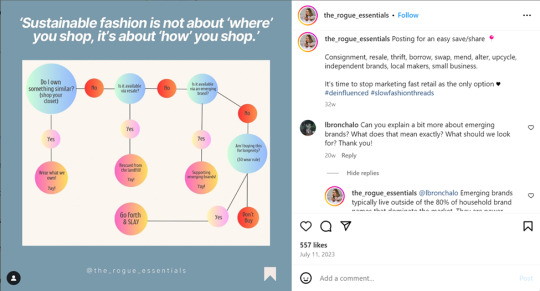
Figure 2: Changing consumers’ perception about taking actions for slow fashion movement
Promoting slow fashion’s behaviors
Short (2022) claims that consumers now depend more on social media influencers in their purchase journey (p. 16); thus, their behaviors are impacted by social media influencers because of observational learning. Understanding this, slow fashion influencer Kathleen Illustrated has created content promoting slow fashion’s behaviors, specifically thrifting, to her audiences. Thrifting is included in the message of slow fashion, which is not “do not buy” new clothes, but it is about reducing the consumption speed and the quantification and buying more sustainable products (Chi et al., 2021, p. 102). Kathleen’s content is about every aspect of thrifting, from thrifting trends to thrifting places to how to style thrifty outfits, etc; furthermore, her posting frequency is regular (Figure 3). Thus, influencing the consumers’ behaviors in the long term.

Figure 3: Promoting thrifting
In conclusion, slow fashion influencers contribute to the slow fashion movement in various ways, and they play a vital role in spreading the slow fashion movement.
REFERENCES
Brewer, M. K. (2019). Slow Fashion in a Fast Fashion World: Promoting Sustainability and Responsibility. Laws, 8(4), 1–9. MDPI. https://doi.org/10.3390/laws8040024
Chi, T., Gerard, J., Yu, Y., & Wang, Y. (2021). A study of U.S. consumers’ intention to purchase slow fashion apparel: understanding the key determinants. International Journal of Fashion Design, Technology and Education, 14(1), 101–112. https://doi.org/10.1080/17543266.2021.1872714
Domingos, M., Vale, V. T., & Faria, S. (2022). Slow Fashion Consumer Behavior: A Literature Review. Sustainability, 14(5), 1–15. https://doi.org/10.3390/su14052860
Jacobson, J., & Harrison, B. (2021). Sustainable fashion social media influencers and content creation calibration. International Journal of Advertising, 41(1), 1–28. https://doi.org/10.1080/02650487.2021.2000125
Lai, Z., Henninger, C. E., & Alevizou, P. J. (2017). An Exploration of Consumers’ Perceptions Towards Sustainable Fashion – A Qualitative Study in the UK. In C. E. Henninger (Ed.), Sustainability in Fashion (pp. 81–101). https://doi.org/10.1007/978-3-319-51253-2_5
Short, H. L. (2022). EXPLORING THE ROLE OF SOCIAL MEDIA INFLUENCERS IN EXPLORING THE ROLE OF SOCIAL MEDIA INFLUENCERS IN PROMOTING SUSTAINABLE FASHION ON TWITTER PROMOTING SUSTAINABLE FASHION ON TWITTER (pp. i–59) [Master’s Theses].
#mda20009#swinburne#week6#slowfashion#social media influencers#thrifting#savers#kathleen illustrated#perception change#brand promotion
0 notes
Text
WEEK FIVE: WHAT IS DIGITAL CITIZENSHIP? HASHTAG PUBLICS, POLITICAL ENGAGEMENT AND ACTIVISM
When it comes to digital citizenship, there are three different approaches to this theory: the unidimensional approach, the multidimensional approach, and the critical and radical approach (Choi & Cristol, 2021, p. 362). However, this discussion only focuses on a unidimensional approach to digital citizenship, which concentrates on one digital citizenship’s aspect based on the discipline (Choi & Cristol, 2021, p. 362), mainly from a political communication and political science perspective.
From this perspective, digital citizenship refers to the concept of participating and engaging in civic issues at various levels (macro and micro) in the online world (Choi & Cristol, 2021, p. 362). One of the online participatory activities with civic issues at the micro level is expressive participation, one of the concepts contributed to the concept of participatory democracy, in which participants will discuss with others about politics and express and show support to politicians in various ways (Choi & Cristol, 2021, p. 364).
However, social media have impacted expressive participation, especially political participation, because social media are now categorized as "platforms," which are places to be heard and to be spoken (Helmond, 2015, p. 2) by providing opportunities to make communication and interaction through the platform’s affordances (Gillespie, 2010, as cited in Helmond, 2015, p. 2). And people will express their participation differently on different social media platforms depending on the social media’s affordances (Theocharis et al., 2023, p. 791).
Take Twitter as an example of how social media platforms have impacted political engagement and expressive participation. Firstly, compared to traditional or standard participation in political issues, Twitter’s affordances like “Follow”, “Share profile via”, “Block”, “Add/remove [account name] from List”, “Comment”, “Retweet”, “Like”, “Hashtags”, “Mention”, etc allow people to express their support or hate for politicians in new ways (Theocharis et al., 2023, p. 795) (Figure 1). For example, the U.S. presidential election in 2024, many U.S. citizens expressed and showed support for Trump by engaging with the hashtag #MakeAmericaGreatAgain and creating other hashtags to show their love and support for Trump: #IStandWithTrump, #TrumpForThePeople, #Trum2024NowMorethanEver, etc. on Twitter (Figure 2). People who support Trump are also given opportunities to engage directly with Trump through commenting on his tweets in different formats (pictures, texts, videos, etc.), following his account, sharing his profile, retweeting his tweets, and so forth (Figure 3). As a “political space” where people can discuss, share, and debate political ideas and issues with politicians (Nelimarkka et al., 2020, p. 2), Twitter can affect election efficiency.

Figure 1: Platform affordances
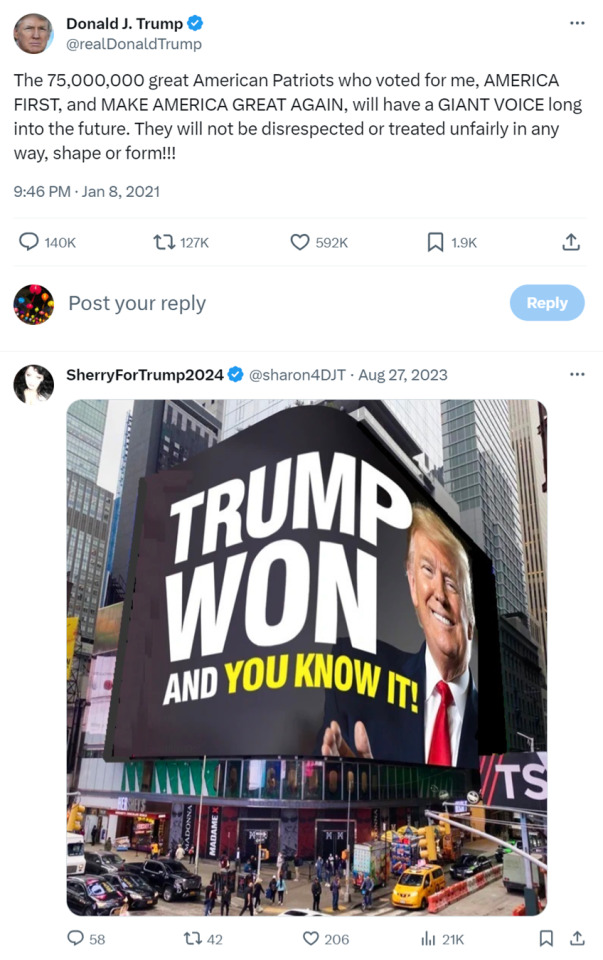
Figure 2: Engage directly with politicians
Additionally, not only do Twitter’s affordances impact the expressive participation of digital citizens, but also, because Twitter is a platform, its design is also a factor that affects the expressive participation of digital citizens. Specifically, not like other social media platforms like Facebook or Instagram, Twitter is designed as a place where people are motivated to participate and engage with politics and share news more than a place for entertainment and social networking services (Nelimarkka et al., 2020, p. 3).
As a result, Twitter, as a social media platform, significantly impacts digital citizens' expressive participation and digital citizenship when its affordances and architecture (design) allow digital citizens to engage in interactivities in numerous ways, self-expressive participation, and collaboration (Theocharis et al., 2023, p. 793).
ADDITIONAL INFORMATION
Platformization: Changing from a social networking site to a platform, Twitter is provided with an interface allowing for (re)programming, an API, and API (1) allows digital citizens to make interactions or respond to requested data and services from other applications, and (2) facilitates exchanging data across applications, creating new applications and the concept of “Web as a platform” (Helmond, 2015, p. 4). These aspects of social media, or Twitter in particular, have contributed to the impact of political engagement when digital citizens can share political news from a website to their Twitter account (Figure 4) and log in to other applications to discuss politics and follow news by using their Twitter account (Figure 5). Moreover, these changes created the new applications “Twitterific” and "Tweetbot,” allowing third parties to let users view tweets in another interface.

Figure 4: Share political news directly from website to Twitter’s account

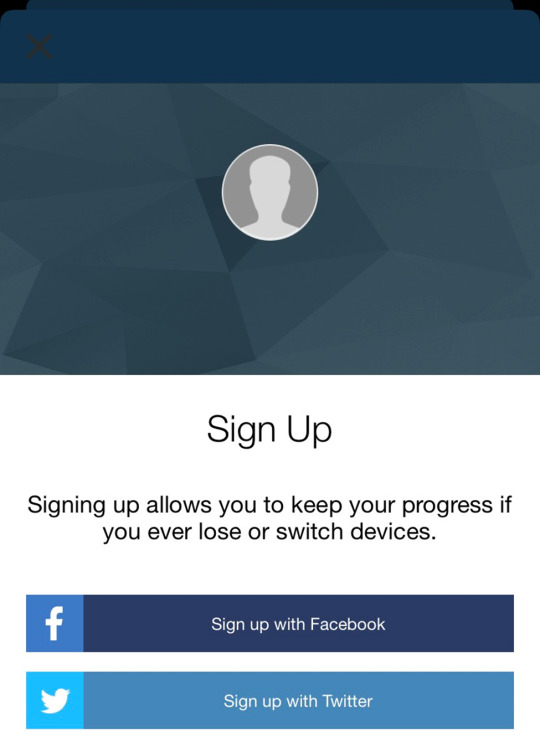
Figure 5: Use Twitter to log in to other applications, here is the app "US Political News"
REFERENCES
M., & Cristol, D. (2021). Digital Citizenship with Intersectionality Lens: Towards Participatory Democracy Driven Digital Citizenship Education. Theory into Practice, 60(4), 361–370. https://doi.org/10.1080/00405841.2021.1987094
Helmond, A. (2015). The Platformization of the Web: Making Web Data Platform Ready. Social Media + Society, 1(2), 1–11. https://doi.org/10.1177/2056305115603080
Nelimarkka, M., Laaksonen, S.-M., Tuokko, M., & Valkonen, T. (2020). Platformed Interactions: How Social Media Platforms Relate to Candidate–Constituent Interaction During Finnish 2015 Election Campaigning. Social Media + Society, 6(2), 1–17. https://doi.org/10.1177/2056305120903856
Theocharis, Y., Boulianne, S., Koc-Michalska, K., & Bimber, B. (2023). Platform affordances and political participation: how social media reshape political engagement. West European Politics, 46(4), 788–811. https://doi.org/10.1080/01402382
#mda20009#swinburne#politics#digitalcitizenship#platform#platformization#twitter#donaltrump#expresssiveparticipation#week5
1 note
·
View note
Text
WEEK 4: DIGITAL COMMUNITY AND FANDOM: REALITY TV CASE STUDY
The rise of social media has been seen in recent years (Mcbride, 2015, p. 1), leading to changes in how audiences and viewers engage with reality TV content when reality TV now relies less on the TV itself (Milne, 2024). Regarding Benedict (2013, p. 1, as cited in Mcbride, 2015, p. 1), reality TV and the broadcasters are now using social media to increase the engagement of audiences and innovate the way in which audiences can engage with the content.
INCREASE AUDIENCES’ ENGAGEMENT AND INNOVATE THE WAY IN ENGAGING WITH REALITY TV
L’Hoiry (2019, p. 2) highlights that audiences can now become co-producers of the reality TV show when they are now given the chance to engage with the show through voting. The Korea reality competition show "Queendom" gave its audiences the chance to “co-produce” the show by integrating social media voting. Audiences can decide the winner of the show by voting on social media, and the contestant with the highest vote will become a “Queendom”. (Figure 1)

Figure 1: Voting
To increase audience engagement, reality TV has privileged its “liveness” and social media, a type of “second screening”, has significantly impacted the “liveness” of reality TV (Stewart, 2020, p. 354). In specific, reality TV now broadcasts their show live across various social media platforms to enrich the “liveness” of the “television viewing” experience of audiences (Stewart, 2020, p. 354). In particular, it creates a “virtual loungeroom” (Stewart, 2020, p. 354), where audiences can simultaneously watch the show and engage with the show and other audiences, who share the same interest with them, in real-time (Deller, 2019, p. 157) through online discussion, tweets, etc. (Figure 2)
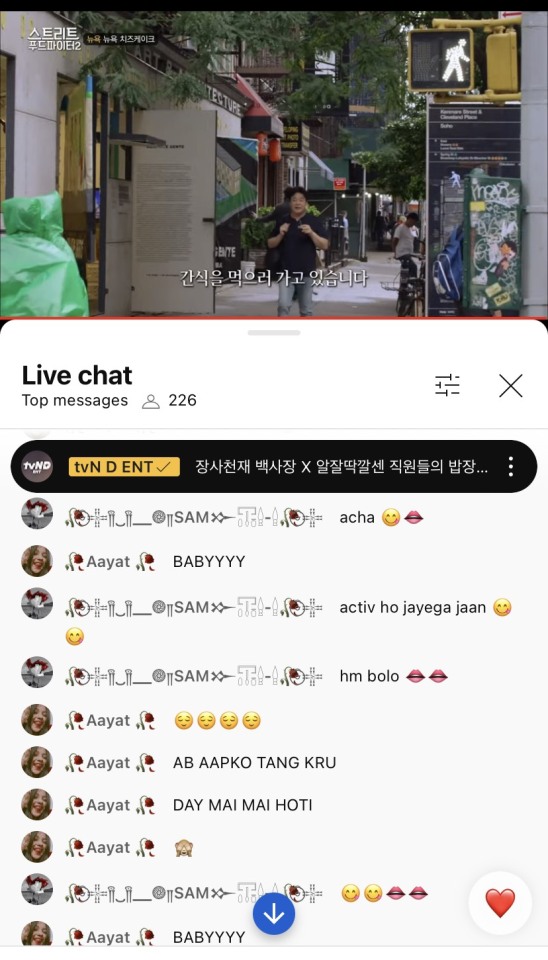
Figure 2: "Liveness" and "virtual loungeroom"
Furthermore, reality TV can leverage social media to extend the show’s life (Deller, 2019, p. 159). Firstly, by publishing the content on social media, reality TV shows can keep their old audiences engaged with the show when audiences can re-watch their favorite shows every time they want, as well as recruit new audiences (Deller, 2019, p. 159). Secondly, audiences prefer humorous discussions, whether online or offline (Deller, 2019, p. 158). Thus, numerous jokes and memes are created by the reality TV brands, which post them on social media and use jokes and memes as a social media strategy in order to increase the audiences’ engagement with the reality TV content (Deller, 2019, p. 159). The more reality TV memes and jokes are used, the longer the reality TV show exists.
Lastly, reality TV also gains benefits from social media to gain the audiences’ engagement when the audiences are given opportunities to create and expand the reality TV shows by creating content that shows “what happened next” and posting it on social media (Deller, 2019, p. 163). For instance, Chuang 2021, a Chinese reality TV show, has received numerous fan-edited videos and discussions about the “real” relationship between two contestants, Santa and Rikimaru. They create social media content that shows the thing that will “happen next” for these contestants is that they will fall in love together and become a couple (Figure 3).

Figure 3: Social media give audiences opportunities to engage with the reality TV show by creating content showing "what happened next"
References
Deller, R. A. (2019). Reality Television in an Age of Social Media. Emerald Publishing.
L’Hoiry, X. (2019). Love Island, Social Media, and Sousveillance: New Pathways of Challenging Realism in Reality TV. Frontiers in Sociology, 4(59), 1–13. https://doi.org/10.3389/fsoc.2019.00059
Mcbride, J. (2015). Social Media & Audience Participation in Regard to Television Part of the Communication Technology and New Media Commons, Social Media Commons, and the Television Commons. https://ideaexchange.uakron.edu/cgi/viewcontent.cgi?referer=&httpsredir=1&article=1053&context=honors_research_projects
Milne, E. (2024). Digital Community and Fandom: Reality TV Case Study [Lecture slides], Canvas@Swinburne University of Technology. https://swinburne.instructure.com/
Stewart, M. (2020). Live tweeting, reality TV and the nation. International Journal of Cultural Studies , 23(3), 352–367. https://doi.org/10.1177/136787791988775
0 notes
Text
WEEK 3: DIGITAL COMMUNITY: TUMBLR CASE STUDY
CASE OVERALL: "BOYS DO CRY" MOVEMENT
Underwood & Olson (2018, p. 90) indicate that because of the muscular masculinities and the gendered emotion ideologies, men usually have been prohibited from expressing their emotional vulnerabilities either to or in front of other men. Bird (1996, as cited in Underwood & Olson, 2018, p. 91) illustrates that the detachment of emotions is the one way to maintain the hierarchy of gender, in consequence, the emotional detachment and gender emotion ideology have led to the high rates of depression and suicide from men. Therefore, by being forbidden in the real-world, social media have been used as the place for men and others to build a community, where they can communicate, share, and express their true emotions and mental issues (Brusilovskiy, Townley, Snethen, & Salzer, 2016, as cited in Griffth & Stein, 2020, p. 49).
TUMBLR AS A DIGITAL COMMUNITY:
Regarding Agostini & Mechant (2019, p. 2), digital community can be understood as ‘online community’. This community usually shares the same interests, goals, values (Pentina, Prybutok & Zhang, 2008, p. 115, as cited in Agostini & Mechant, 2019, p. 2) and even shares same reasons for joining, namely social support, friendship, exchanging information, etc (Ridings & Gefen, 2004, as cited in Agostini & Mechant, 2019, p. 2).
According to McCracken et al. (2020, p. 24), not like other social media sites, such as Facebook or Twitter, Tumblr over focuses the contents and topics compared to the connections with other users. So, Tumblr uses do not need to follow others to know a content or topic. However, Tumblr still offers both connections with others and topics when the platform provides a place, a dashboard, where users can generate their own content, consume other users’ contents and discover who interest in their content (McCracken et al., 2020, p. 24). Particularly, thanks to Tumblr affordances, which include hashtags, relatively public, anonymity, etc. users can find and join the community through searching and using hashtags – tool that connecting like-minded people together (Reif et al., 2022, p. 4). Besides, Tumblr’s users are more likely to orient themselves around the community of Tumblr in comparison with the platform’s content (McCracken et al, 2020, p. 35). Moreover, Tumblr is called a platform that users express their authentic emotions (Hart, 2015, p. 201, as cited in Reif et al., 2022, p. 7).
“BOYS DO CRY" MOVEMENT AS A DIGITIAL COMMUNITY ON TUMBLR:
Tumblr can be considered as a digital community for “Boys do cry” supporters when the platform allows users to share and express their opinion about the topics or issues that they have passion the most and connect with other users, who share the same voices, to discuss, find, and celebrate the social justice for themselves (McCracken et al., 2020, p. 37 – 38), which in this circumstance is sharing and expressing the inside thoughts that men can cry, men do cry, and normalize the crying of the men in order to find the justice for men in expressing his true emotions without being judged! In specific, supporters for “Boys do cry” movement can connect with each other through searching and using “#boysdocry”, “#boydoescry”, “#menright”, or any related hashtags (Figure 1). Not only using hashtags helps the movement’s supporters be in the community, reblogging or following others’ liked-minded posts can also help them with this. The “Boys do cry” supporters can show their authentic emotions to the issue through posting various types of contents that Tumblr can afford, such as GIFs, texts, images, video, etc.) (McCreacken et al., 2020, p. 25). The songs “Boys do cry” by Marius Bear and “Boys do cry” by Piff Marti, normalizing the crying of the men and men’s emotional vulnerabilities, are supported strongly by the movement’s supporters when they upload GIFs, images, attach YouTube’s link of the song on their Tumblr posts (Figure 2).

Figure 1: Connect with others through hashtags

Figure 2: Share content to support the movement
TUMBLR AS A PUBLIC SPHERE:
According to Milne (2024), public sphere is now also included the communities/micro-publics; in addition, public sphere is a place where people feel free and safe to make contribution about issues related to politics, economics, and society. Therefore, Tumblr can be categorized as a public sphere when it creates a safe environment for users to discuss those issues, which Tumblr’s users do not need to be their true self and they can be anonymous when active and engage on the platform (McCracken et al., 2020, p. 37). As the “Boys do cry” supporters, various users contribute to the hashtag ‘Boys do cry’ and engage with the movement but using anonymous accounts, which they use fictional characters, scenery photos, etc as their profile pictures and use fake name to name their Tumblr’s accounts and ID (Figure 3). Thus, besides being a digital community, Tumblr is also a public sphere.

Figure 3: Anonymity
References
Agostini, S., & Mechant, P. (2019). Towards a Definition of Virtual Community. Signo Y Pensamiento, 38(74), 1–19. https://doi.org/10.11144/javeriana.syp38-74.tdvc
Fuchs, C. (2014). Social Media and the Public Sphere. TripleC , 12(1), 57–101.
Griffith, F. J., & Stein, C. H. (2020). Behind the Hashtag: Online Disclosure of Mental Illness and Community Response on Tumblr. American Journal of Community Psychology, 67, 419–432. https://doi.org/10.1002/ajcp.12483
Kruse, L. M., Norris, D. R., & Flinchum, J. R. (2018). Social Media as a Public Sphere? Politics on Social Media. The Sociological Quarterly, 59(1), 62–84. https://doi.org/10.1080/00380253.2017.1383143
McCracken, A., Cho, A., Stein, L., & Neill Hoch, I. (2020). A Tumblr Book. University of Michigan Press.
Reif, A., Miller, I., & Taddicken, M. (2022). “Love the Skin You‘re In”: An Analysis of Women’s Self-Presentation and User Reactions to Selfies Using the Tumblr Hashtag #bodypositive. Mass Communication and Society, 1–25. https://doi.org/10.1080/15205436.2022.2138442
Underwood, M., & Olson, R. (2018). “Manly tears exploded from my eyes, lets feel together brahs”: Emotion and masculinity within an online body building community. Journal of Sociology, 55(1), 90–107. https://doi.org/10.1177/1440783318766610
1 note
·
View note